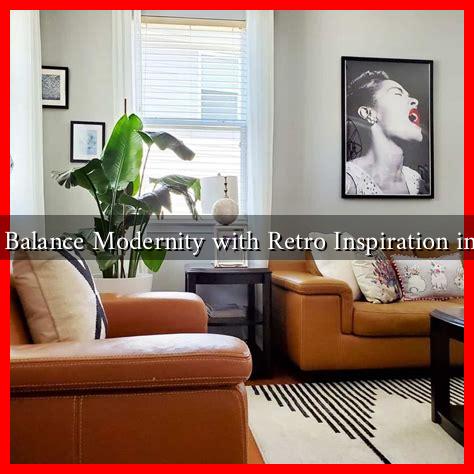-
Table of Contents
How to Balance Modernity with Retro Inspiration in Design
In the ever-evolving world of design, the challenge of balancing modernity with retro inspiration is both an art and a science. Designers today are tasked with creating spaces, products, and visuals that resonate with contemporary audiences while paying homage to the aesthetics of the past. This article explores effective strategies for achieving this balance, supported by examples and insights from industry experts.
The Allure of Retro Design
Retro design evokes nostalgia, often drawing on styles from the mid-20th century and earlier. This appeal can be attributed to several factors:
- Nostalgia: Retro elements can evoke fond memories, creating an emotional connection with the audience.
- Timelessness: Many retro designs have a classic quality that transcends trends, making them relevant even today.
- Unique Aesthetic: Retro styles often feature bold colors, unique patterns, and distinctive typography that stand out in a modern context.
For instance, the resurgence of mid-century modern furniture in contemporary homes illustrates how retro design can seamlessly integrate into modern aesthetics. Brands like West Elm and CB2 have successfully incorporated these elements into their collections, appealing to both nostalgic consumers and modern minimalists.
Embracing Modernity
Modern design is characterized by clean lines, minimalism, and functionality. It often prioritizes sustainability and technology, reflecting current societal values. To effectively balance modernity with retro inspiration, designers can consider the following strategies:
- Material Innovation: Use modern materials that enhance the retro aesthetic. For example, combining traditional wood finishes with contemporary metals can create a striking contrast.
- Technology Integration: Incorporate smart technology into retro-inspired designs. A vintage-style radio that streams music via Bluetooth is a perfect example of this fusion.
- Color Palette: Use modern color trends to reinterpret retro designs. For instance, pairing muted pastels with bold retro patterns can create a fresh yet nostalgic look.
Case Studies: Successful Balancing Acts
Several brands and designers have successfully navigated the balance between modernity and retro inspiration:
1. Apple’s Retro Aesthetic
Apple has often drawn inspiration from retro design, particularly in its product launches. The original iMac, with its colorful, translucent casing, harkens back to the playful designs of the 1990s while incorporating cutting-edge technology. This blend of nostalgia and modern functionality has contributed to Apple’s iconic status.
2. The Revival of Vintage Typography
In graphic design, vintage typography has made a significant comeback. Brands like Coca-Cola and Levi’s have embraced retro fonts in their marketing campaigns, creating a sense of authenticity and nostalgia while appealing to modern consumers. This strategy not only honors the past but also connects with younger audiences who appreciate vintage aesthetics.
Practical Tips for Designers
For designers looking to strike the right balance between modernity and retro inspiration, consider the following practical tips:
- Research Historical Context: Understand the origins of retro styles to effectively incorporate them into modern designs.
- Experiment with Proportions: Play with scale and proportion to create a harmonious blend of old and new elements.
- Seek Feedback: Engage with your audience to gauge their reactions to your designs, ensuring that the balance resonates with them.
Conclusion
Balancing modernity with retro inspiration in design is a rewarding challenge that can lead to innovative and engaging outcomes. By understanding the allure of retro aesthetics, embracing modern materials and technology, and learning from successful case studies, designers can create compelling works that resonate with diverse audiences. As the design landscape continues to evolve, the fusion of past and present will remain a vital source of inspiration, ensuring that both nostalgia and innovation coexist harmoniously.
For further reading on design trends and inspirations, visit Designboom.

